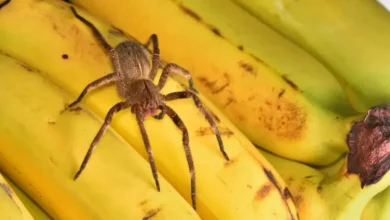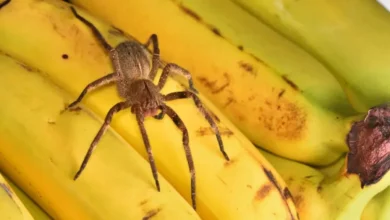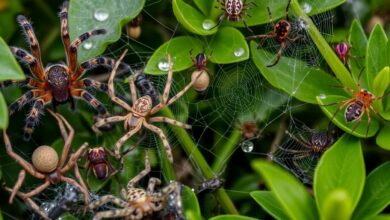Amazing Properties of Spider Silk

Spider silk is a natural wonder that has caught the eye of many. It’s known for its incredible strength and how well it works with the body. This makes it a key player in the world of biomaterials and sustainable fibers.
Scientists are studying spider silk to unlock its secrets. They want to learn how to make synthetic versions. This could lead to new materials that are stronger and more eco-friendly.
Dragline silk is the strongest thread in nature. It’s a big deal for scientists and engineers. They’re trying to figure out how to use its amazing properties for things like healing and making new materials.
Introducing Spider Silk: Nature’s Miraculous Fiber
Imagine a material so strong it could stop a falling jet plane without breaking. This amazing substance isn’t made by humans, but by spiders. It’s called spider silk. This protein-based fiber is made by many spider species and has amazed scientists for its strength and how it’s made.
Understanding the Origins and Significance of Arachnid Fibers
Spider silk is a natural wonder that spiders have been making for millions of years. They use it to build webs, catch food, and protect their eggs. The way spiders make this arachnid fiber has always fascinated researchers. They want to learn more about how it’s produced.
- Wool fiber diameters range from about 16 to 40 microns, while spider silk fibers can be even finer.
- Spider silk is known for its exceptional tensile strength, with single fibers capable of stretching up to 30% of their length without breaking.
- Curly hair tarantulas, scientifically known as Tliltocatl albopilosus, are a popular choice among spider enthusiasts due to their unique appearance and gentle nature.
Exploring the world of arachnid fibers shows us the amazing potential of spider silk. It could change many industries, like biomedicine and sustainable materials. The journey to fully use this natural wonder is just starting.

Tensile Strength: Spider Silk’s Unparalleled Toughness
Spider silk is incredibly strong, even stronger than steel. But it’s also very flexible, unlike many synthetic materials. This makes spider silk a tough and durable natural fiber.
Scientists are trying to figure out why spider silk is so strong. They want to use this knowledge to make new materials. The market for synthetic fibers is growing fast, reaching USD 66.11 billion in 2022.
Spider silk’s strength comes from its unique shape under tension. Synthetic fibers that mimic spider silk are now available. They are better than regular plastics in how they handle stress.
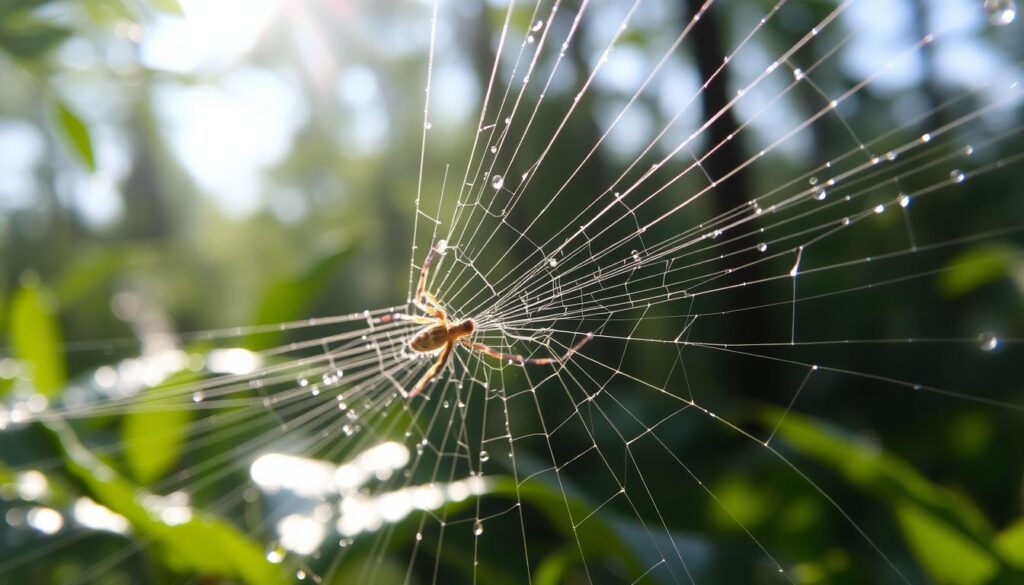
New materials inspired by spider silk are also being made. These materials are very stretchy and tough. This shows the potential of biomaterials based on spider silk’s amazing properties.
Bioengineering Marvels: Harnessing Spider Silk Genes
Spider silk has always amazed scientists and engineers. Recently, we’ve made big strides in understanding how spiders make silk. This knowledge has led to new ways to create synthetic spider silk through genetic engineering.
Exploring the Potential of Synthetic Spider Silk Production
Creating synthetic spider silk is a game-changer. This material is incredibly strong, tough, and can break down naturally. It could be used in many fields, from clothes and medical tools to new materials. Scientists are working hard to make this process better and bigger.
But making lots of spider silk is hard because spiders are hard to farm. They live alone, making it tough to get silk on a big scale. Genetic engineering has solved this problem. Now, scientists can put spider silk genes into other living things like bacteria and yeast.
- With recombinant DNA technology, we can make synthetic spider silk proteins in these new hosts. This opens the door to making lots of this amazing material.
- They’re also working on making the silk-spinning process better. This way, they can create fibers that are just as good as the real thing.
- Thanks to protein engineering and biomimicry, synthetic spider silk is getting even better. It’s becoming stronger, more durable, and more useful than ever before.
The work on synthetic spider silk is getting more exciting every day. It could change many industries, from clothes and medical devices to space technology. The journey to use spider silk genes shows how bioengineering can unlock nature’s secrets for a better future.
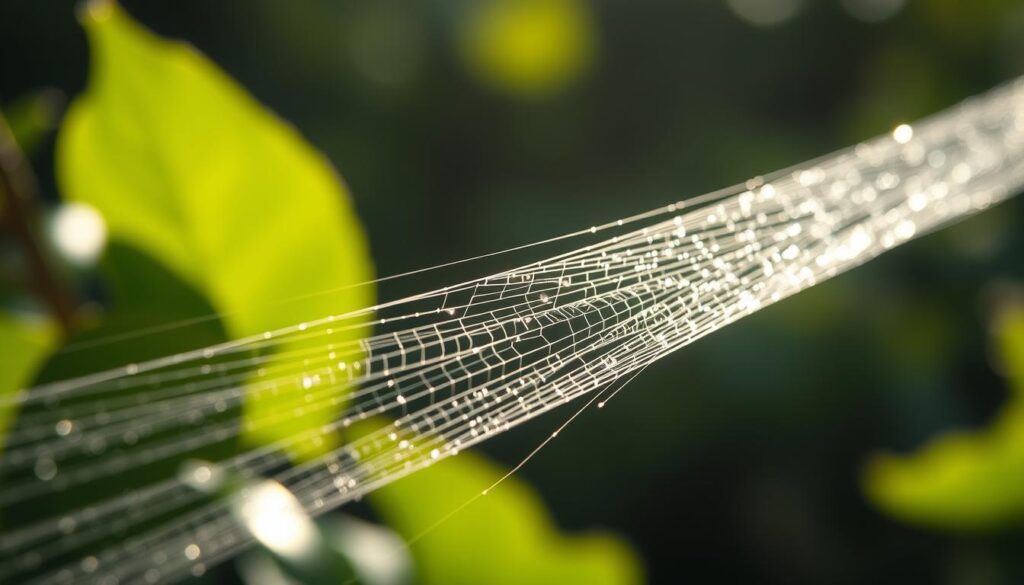
Dragline Silk: The Strongest Thread in Nature
Dragline silk is the strongest natural fiber known. Spiders use it for their webs and lifelines. It’s stronger than many synthetic materials.
Delving into the Mechanics and Structure of Dragline Silk
Scientists have studied dragline silk a lot. They want to know why it’s so strong and elastic. Its unique mix of strength and flexibility is amazing.
Spider silk can stretch up to five times its length without breaking. It’s more elastic than Kevlar. Also, it’s five times stronger than steel of the same size.
Spiders can make up to seven different types of silk. Each type has its own purpose. This shows how smart spiders are.
| Property | Spider Silk | Synthetic Fibers |
|---|---|---|
| Tensile Strength | Five times stronger than steel | Lower than spider silk |
| Elasticity | Can stretch up to five times its original length | Less elastic than spider silk |
| Biodegradability | Naturally biodegradable | Non-biodegradable |
People are very interested in making synthetic spider silk. Companies like Bolt Threads and Kraig Biocraft Laboratories are working on it. They want to make it a sustainable option.
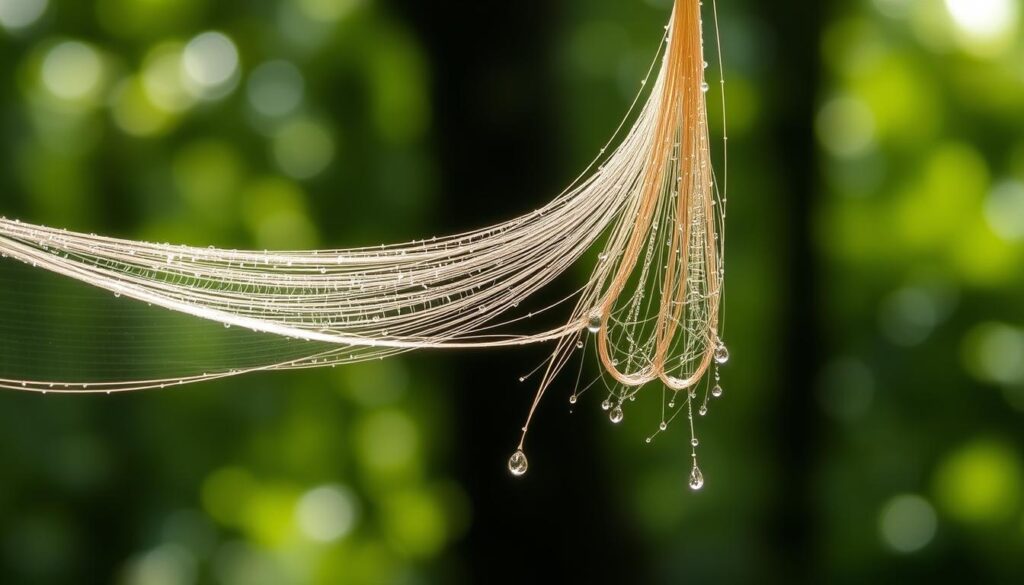
 World’s Largest Spider: Meet the Goliath Birdeater
World’s Largest Spider: Meet the Goliath Birdeater
Spider Silk: A Sustainable Solution for Natural Fibers
Spider silk is not just strong; it’s also sustainable. It’s a natural, biodegradable, and eco-friendly option. Unlike synthetic fibers, spider silk is made by spiders without harming the environment. This makes it a great sustainable alternative for textiles and materials science.
Spider silk is better than traditional natural fibers like cotton and wool. It needs less land, water, and energy to make. This makes spider silk a promising biomaterial for the future.
As we become more aware of our environmental impact, the need for sustainable materials like spider silk grows. Researchers and industry leaders are finding new ways to use spider silk. They’re exploring its use in textiles, composites, and even medical and engineering fields.
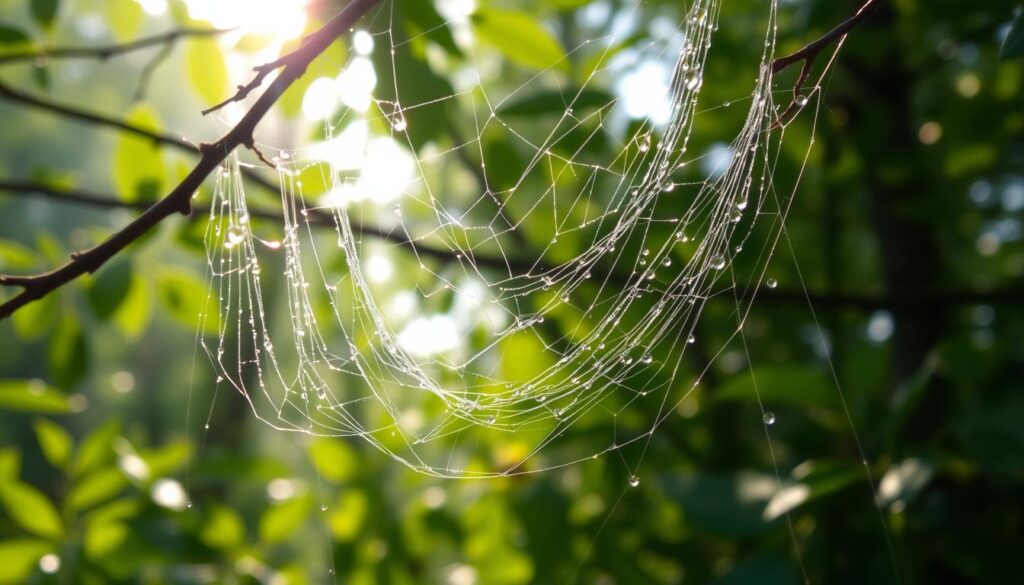
Spider silk is a key player in the future of natural fibers and biomaterials. As we look for greener options, spider silk stands out. Its unique properties and production methods are set to shape a more sustainable world.
Unraveling the Mysteries of Silk Biosynthesis
The making of spider silk is a complex process scientists are still trying to understand. Inside the spider’s silk glands, a series of steps turns raw materials into silk fiber. Scientists are studying the genetics and chemistry of silk biosynthesis to learn more. They hope to use this knowledge to create synthetic silk production methods.
Investigating the Complex Processes Behind Spider Silk Formation
The creation of spider silk involves a detailed process. It starts with the expression of specific silk genes and the transformation of protein polymers into silk. The silk proteins, called fibroins, are secreted into the glands. Then, they go through chemical and physical changes to become the strong and elastic silk we know.
Scientists have made big progress in understanding silk biosynthesis. They’ve found out how important the spider’s genes and biochemical processes are. By studying these, scientists aim to unlock the secrets of spider silk. They hope to use this knowledge to create new biomaterials and synthetic protein polymers.
Studying silk biosynthesis could change many industries. From textiles and engineering to medicine, the possibilities are endless. As scientists continue to learn about spider silk, the future looks very promising.
Recombinant Silk: Revolutionizing Biomaterials
Recombinant spider silk is changing the game in biomaterials. Scientists use genetic engineering to make synthetic versions of spider silk proteins. These can be used to make everything from medical sutures to advanced composites.
This material is very versatile and can be customized. It’s especially popular in the biomedical and engineering industries. The synthetic fibers market is growing fast, with a CAGR of 7.4% from 2023 to 2030.
Recombinant spider silk is better for the environment than traditional materials. It’s made from sustainable sources, unlike carbon fibers which are made from petroleum. This makes it a cost-effective and eco-friendly choice.
Studies show that bio-based polymers, like silk proteins, can make high-performance fibers. These fibers have better mechanical properties than traditional materials. They can be made through wet spinning or dry-jet wet spinning processes.
| Key Findings from Recent Research |
|---|
|
The need for sustainable biomaterials is growing. Recombinant spider silk and other protein polymers are leading the way. They promise a future with more eco-friendly options and a wide range of applications.
Spider Silk: Weaving a Future in Protein Polymers
Spider silk’s amazing properties have caught the eye of scientists everywhere. It’s not just for making silk again; it’s a key to new biomaterials. Spider silk proteins are changing materials science, from strong textiles to medical uses.
Exploring the Versatile Applications of Spider Silk Proteins
Scientists are looking into spider silk proteins for many uses. They can make new biomaterials with special properties. This opens doors for textiles, medical tools, and more.
Spider silk is super strong and tough, perfect for advanced textiles and composites. Scientists use its unique structure to make strong, flexible, and green materials.
In medicine, spider silk is a hit because it’s safe and breaks down easily. It’s great for making medical scaffolds, wound dressings, and drug carriers. This could lead to new treatments and personalized care.
| Application | Benefit of Spider Silk Proteins |
|---|---|
| Textiles | High tensile strength, flexibility, and durability |
| Composites | Lightweight, strong, and customizable material properties |
| Medical Devices | Biocompatibility, biodegradability, and potential for drug delivery |
| Regenerative Medicine | Scaffold for tissue engineering and wound healing applications |
As we learn more about spider silk, its future looks bright. Spider silk biomaterials could change many industries. From advanced textiles to medical breakthroughs, the possibilities are endless.
The Remarkable Properties of Spider Silk
Spider silk is a natural material with amazing properties. It is known for its tensile strength, which is stronger than steel. Yet, it is also very flexible and elastic.
This makes it hard to break and can stretch a lot without losing its shape. Scientists and engineers are very interested in spider silk. They want to use it in many things like textiles, medical devices, composites, and biomaterials.
Spider silk’s mix of strength, flexibility, and resilience is unique. It inspires new discoveries in materials science and engineering. As we learn more about spider silk, we see more ways to use it. It could change many industries in the future.
Silk Genes: Decoding Nature’s Blueprints
The secret to making spider silk lies in understanding its genes. Scientists have made big steps in figuring out the silk genes that make silk in spiders. They’ve learned a lot about how spider silk proteins are made, which helps us understand why it’s so special.
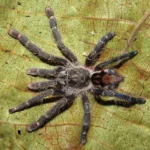 Ybyrapora sooretama
Ybyrapora sooretama
Unlocking the Genetic Secrets of Spider Silk Production
These discoveries have led to making synthetic spider silk on a big scale. This is thanks to new ways of using genes to make biomaterials. Now, we can make new products that use spider silk’s amazing qualities.
The fast progress in spider silk gene research is exciting. It’s helped the synthetic biology market grow a lot. Soon, spider silk-based materials could be used in many different fields.
| Statistic | Value |
|---|---|
| Synthetic Biology Market Size | USD 14.62 billion in 2023 |
| Synthetic Biology Revenue Growth | 25.4% CAGR from 2024 to 2030, reaching USD 71.30 billion |
| North America Market Share | Largest share, around 40% in 2021 |
| Leading Manufacturer | Thermo Fisher Scientific (US) |
By figuring out how spider silk is made, scientists have opened up new possibilities. They’re working on protein polymers and biomaterials that could be just as good as natural spider silk. This could change many industries, from clothes to medicine.
Biomimicry: Learning from Spider Silk’s Design
The amazing qualities of spider silk have inspired many to look to nature for ideas. This idea is called biomimicry. Scientists study spider silk’s molecular structure and how it’s made. They use this knowledge to create new synthetic materials.
Biomimicry lets us copy or mimic the design of natural materials like spider silk. This way, we can make man-made materials that are just as good. It’s a big step forward in materials science, leading to the creation of advanced biomaterials.
Biomimicry became well-known in the late 20th century, thanks to Janine Benyus’ book “Biomimicry: Innovation Inspired by Nature” in 1997. It’s a way to innovate sustainably, tackling big issues like climate change and resource use.
Biomimicry has three levels: form, process, and system. Engineers look at nature to find ways to solve human problems. For example, they use the design of trees and bones to make buildings stronger and more sustainable.
In the case of spider silk, scientists are excited about its potential. They see it as a model for new materials in fields like material science and biotechnology. The data on spider silk’s strength and uses is helping scientists and engineers create innovative products.
By following biomimicry and studying spider silk, we can make sustainable and effective synthetic materials. These materials can help solve the problems of today’s world.
Spider Silk in Medicine: A Game-Changer for Regenerative Therapies
The unique properties of spider silk make it a game-changer in medicine. It’s biocompatible and strong. Researchers are using it for medical applications like wound healing and drug delivery.
Harnessing the Biocompatibility and Strength of Spider Silk
Spider silk is safe for the human body. Its strength and flexibility are perfect for medical devices. Scientists are working to use spider silk to improve regenerative therapies.
Spider silk is changing medicine. It’s being used for wound healing and drug delivery. The goal is to use it to improve treatments and help patients.
| Key Spider Silk Properties | Potential Medical Applications |
|---|---|
| Biocompatibility | Wound healing, tissue engineering, drug delivery |
| Tensile Strength | Advanced medical devices, implants |
| Flexibility | Flexible medical devices, implants |
Spider Silk: A Sustainable Alternative to Conventional Materials
Spider silk is not just amazing for its properties. It’s also a green material that could replace many synthetic ones. Unlike many materials made from oil, making spider silk is natural and kind to the planet. Spiders spin silk without using harmful chemicals or lots of energy.
This green aspect, along with spider silk‘s unique qualities, has caught the eye of many. It’s seen as a way to make products that are better for the environment. The fast fashion world, with clothes changing so quickly, could really benefit from spider silk.
Also, making traditional materials like cotton uses a lot of water. It takes about 20,000 liters of water for just one kilogram of cotton. But, making spider silk is much better for the planet. This makes it a great choice for eco-friendly natural fibers and biomaterials.
As we look for ways to lessen our impact on the environment, spider silk is worth looking into. It’s versatile and green, making it perfect for many uses. By using this natural fiber, we can help create a more sustainable world, one thread at a time.
The Future of Spider Silk: Challenges and Opportunities
Spider silk is a natural wonder with amazing properties and potential uses. Yet, its future faces both exciting challenges and opportunities. Scaling up production and making it affordable are major hurdles.
Addressing the Hurdles in Large-Scale Spider Silk Production
Researchers have made big steps in making synthetic spider silk. But, making it for real-world use is still a big challenge. Overcoming technical, logistical, and economic barriers is key to making spider silk widely available.
- Overcoming technical hurdles in large-scale spider silk production
- Optimizing logistical and economic feasibility for commercial viability
- Driving innovation to unlock the transformative capabilities of spider silk
The demand for sustainable biomaterials is rising. Spider silk’s future looks bright. By solving production challenges, we can see spider silk change many industries, from textiles to medicine.
| Challenge | Opportunity |
|---|---|
| Scalability of spider silk production | Developing cost-effective, high-yield manufacturing processes |
| Overcoming technical complexities | Leveraging advancements in biotechnology and engineering |
| Ensuring economic feasibility | Driving innovation to unlock new applications and revenue streams |
By tackling these challenges and grabbing the opportunities, we can make spider silk a game-changer. It will transform industries, enhance lives, and lead to a greener future.
Interdisciplinary Collaborations: Unlocking Spider Silk’s Full Potential
The amazing properties of spider silk have caught the attention of many researchers. They come from fields like materials science, bioengineering, biology, and chemistry. By working together, they aim to fully explore spider silk’s potential.
Researchers are now looking into new ways to make and use spider silk. This teamwork brings fresh ideas and methods to the table. It’s helping to speed up the discovery of new uses for spider silk, which could change many industries and improve lives globally.
Experts in spider silk, biomaterials, and materials science are making great strides. They’re learning more about spider silk’s structure and uses. Their combined efforts are set to reveal spider silk’s full potential, from creating advanced materials to finding new medical and tech uses.
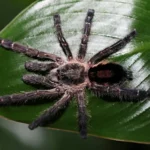 Ybyrapora gamba
Ybyrapora gamba
